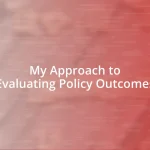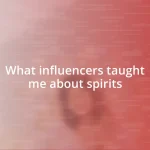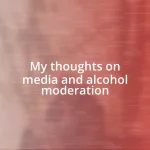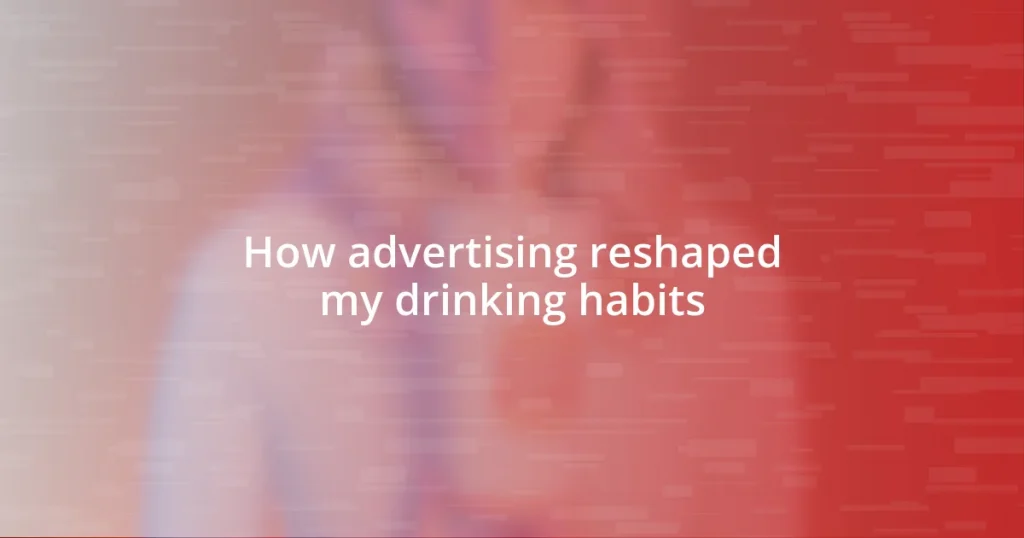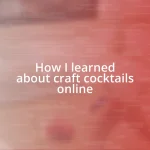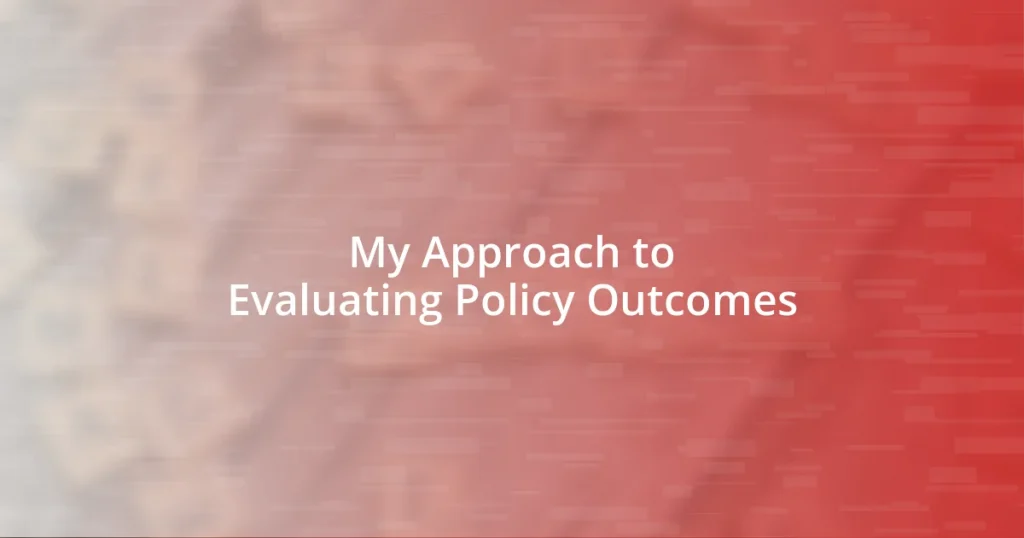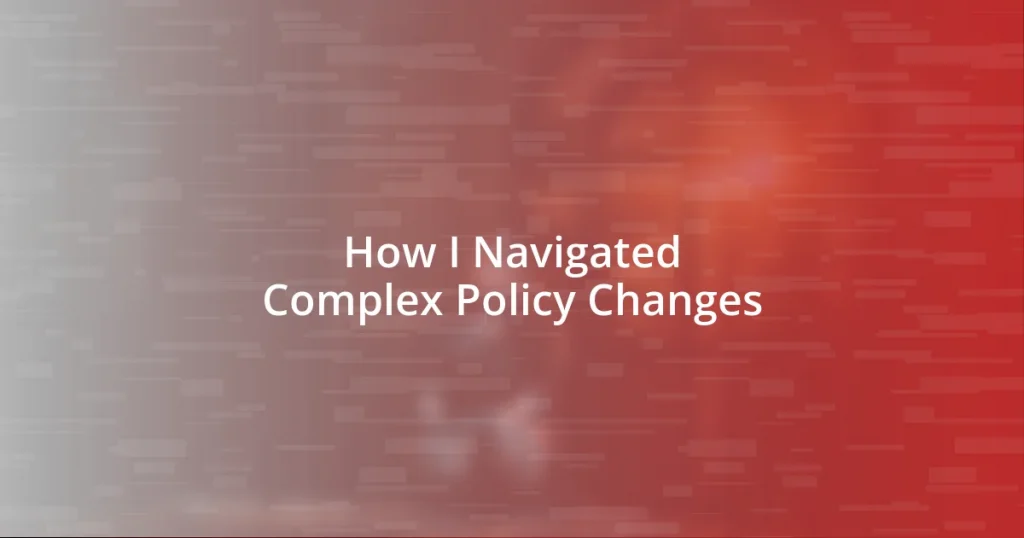Key takeaways:
- Advertising significantly influences our choices and perceptions of happiness, often linking emotional experiences to specific products.
- Analyzing personal drinking habits reveals patterns driven by advertising and peer pressure, prompting reflection on true preferences versus conditioned desires.
- Strategies like mindful drinking, exploring non-alcoholic alternatives, and surrounding oneself with supportive friends can help resist negative influences from advertising.
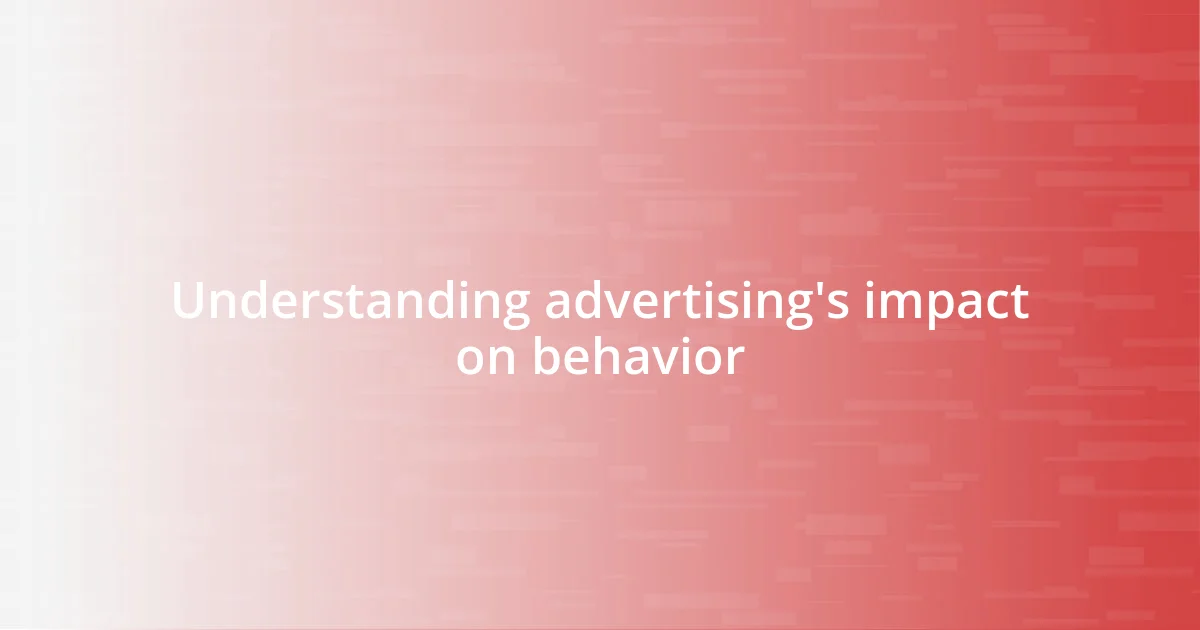
Understanding advertising’s impact on behavior
Advertising shapes our choices more than we might realize. I remember scrolling through my feed and suddenly feeling a tug of desire when I saw a vibrant cocktail recipe pop up, complete with stunning visuals. It made me think—how much are those alluring ads influencing my decisions when I already know adopting healthier habits would lead to a more fulfilling lifestyle?
Take a moment to consider this: for years, I was bombarded by slogans and images that romanticized drinking as a social necessity. The bright, happy faces, the clinking of glasses—how could I resist the allure of those moments? It’s interesting to reflect on how these marketing strategies subtly nudged me towards certain brands and experiences that I might have otherwise overlooked.
When I began to recognize these patterns, it felt like an awakening. I realized I wasn’t just drawn to the products; I was responding to the emotions those ads stirred within me—joy, camaraderie, maybe even escapism. Could it be that these emotional triggers are deliberately designed to create an association between drinking and happiness in our minds?
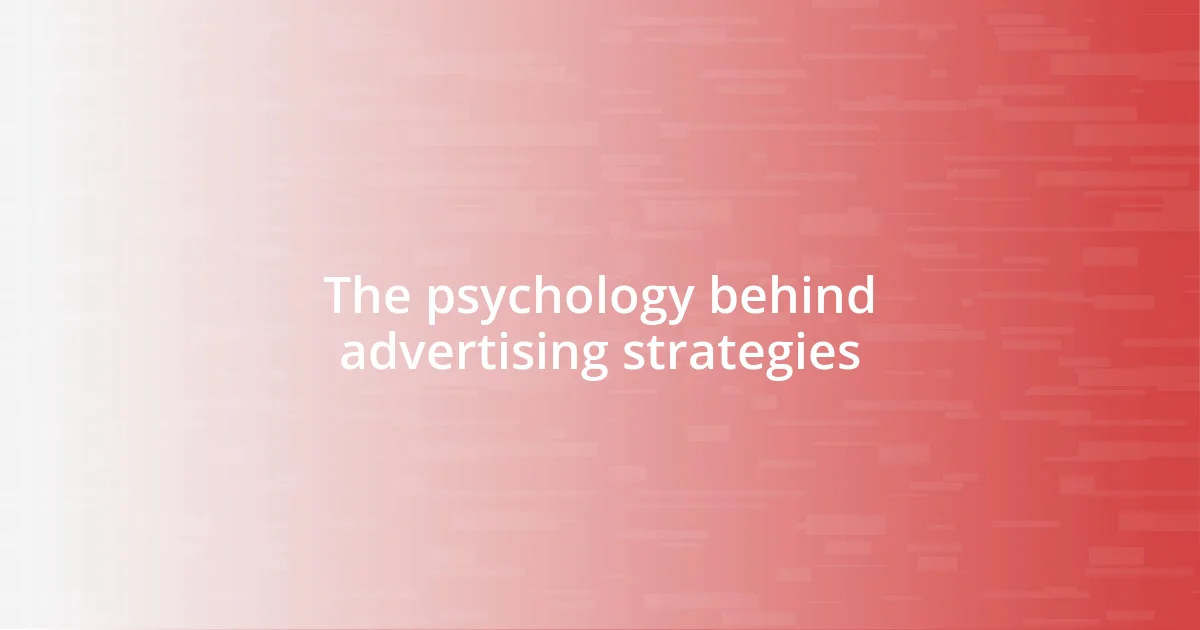
The psychology behind advertising strategies
Advertising isn’t just about promoting products; it’s an intricate dance of psychology that taps into our emotions and social behaviors. For instance, I often found myself yearning for a cold beer on a hot day after seeing an ad featuring a picturesque beach scene, complete with laughter and friends. It dawned on me that these campaigns exploit our subconscious triggers; the bright colors, the catchy jingles—all designed to create lasting impressions linked to our most cherished social experiences.
Here’s a closer look at some psychological strategies that advertising uses:
- Emotional Appeal: Advertisements often evoke strong feelings—happiness, nostalgia, and even fear—making us more prone to impulse buying.
- Social Proof: By showcasing groups of people enjoying products, marketers leverage our natural tendency to conform and seek acceptance.
- Scarcity & Urgency: Phrases like “limited time offer” create a fear of missing out, encouraging quick decision-making without much thought.
- Aspirational Messaging: Many ads portray an ideal lifestyle, linking consumption to personal identity, pushing us to align with these crafted images of success and happiness.
These techniques resonate with me on a personal level; I’ve frequently caught myself contemplating whether my choices are truly my own or heavily influenced by such advertising tactics. It’s fascinating—and a bit unsettling—to realize how deeply these strategies can shape not just our spending habits, but also our perceptions of happiness and fulfillment.
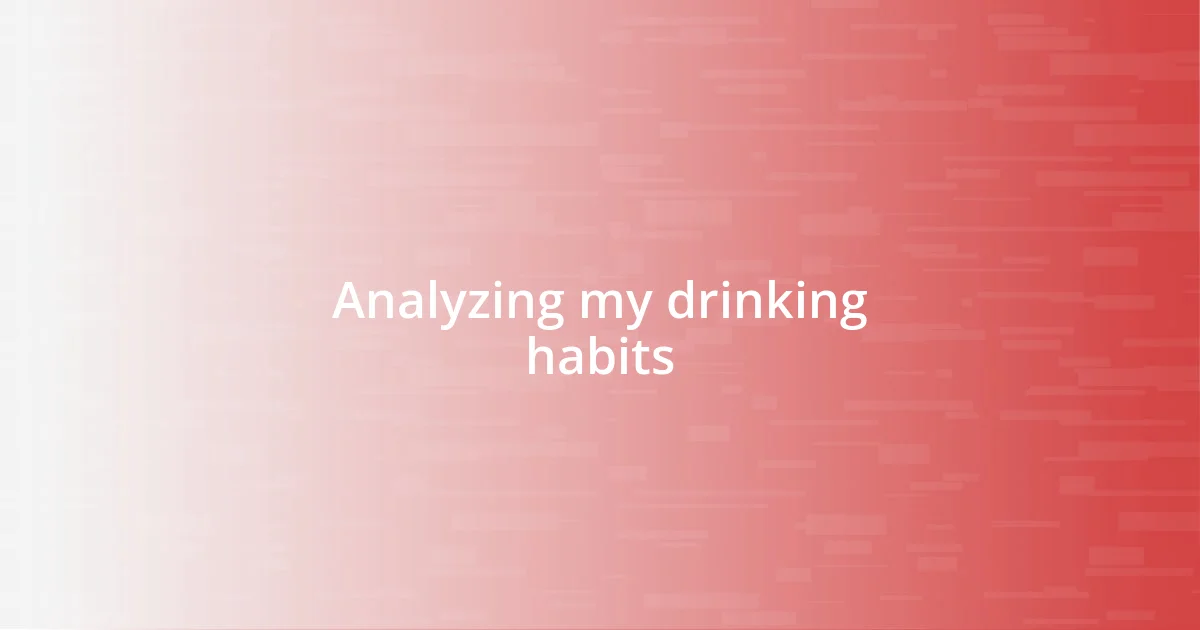
Analyzing my drinking habits
Absolutely, analyzing my drinking habits has been quite the eye-opening experience. It’s intriguing how my behavior subtly shifted over time, often without me realizing it. For example, there was a stretch where I noticed that my evenings revolved around my favorite cocktails. Initially, it felt like a treat, but over time I could see how often I reached for that extra drink, almost out of habit. Understanding this pattern has unmasked the influence of advertising on my choices.
Reflecting on those moments, I remember a time when I was at a friend’s gathering, and the presence of trendy drinks was everywhere. It hit me—was I genuinely enjoying the drinks, or was I simply participating in what the advertisements portrayed as ‘cool’ and ‘fun’? This realization was sobering. Ads often create an environment where drinking feels like the only form of social engagement. However, now I actively think about what I choose to drink and how it aligns with my health goals.
In light of this, I’ve started to track my drinking over the last few months, revealing patterns I hadn’t noticed before. It’s fascinating that certain social occasions prompted heavier consumption, while quieter evenings led to more mindful sipping. This personal experiment has brought both clarity and empowerment, enabling me to make choices aligned with my values, rather than just reacting to what I see on screens.
| Habit Reflection | Emotional Insight |
|---|---|
| Evening Cocktails | Shift from Treat to Routine |
| Social Gatherings | Participating vs. Enjoying |
| Tracking Intake | Sudden Awareness of Consumption Patterns |
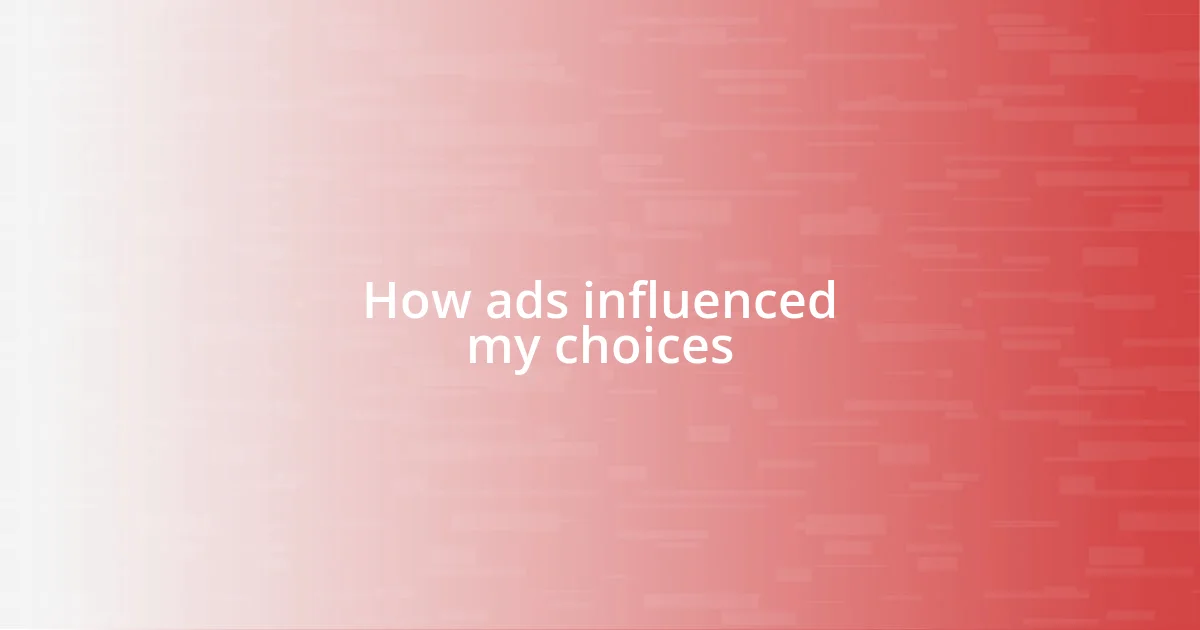
How ads influenced my choices
When I reflect on how advertising has influenced my choices, one vivid memory stands out. I recall flipping through a magazine and landing on an ad that showcased a vibrant rooftop party, everyone clinking glasses of a new craft beer. At that moment, I felt an inexplicable urge to be part of that scene. Was I really drawn to the beer itself, or was it the idea of being social and carefree that made me want it? This experience made me realize how powerful imagery plays a role in shaping our desires.
Sometimes, I catch myself reminiscing about the days when a popular energy drink dominated my fridge. The flashy commercials featuring athletes and celebrities made me convinced that I needed that drink to elevate my own social status. Looking back, the emotional pull of those ads felt almost like a badge of honor, which is rather revealing. How many of my decisions were made based on the desire to project an image rather than genuine need? It’s unsettling to think that these marketing strategies can hijack our self-perception.
One particularly impactful moment came when I attended a social event where all my friends were sipping trendy drinks that I had seen on social media. In that split second, I felt pressured to conform, even though I preferred something simpler. I found myself questioning: why was I letting advertisements dictate my choices at that moment? It’s been a journey of understanding where my preferences end and the influence of advertising begins. Now, I strive to separate my true tastes from what I’ve been conditioned to think tastes good, creating a more authentic relationship with what I consume.
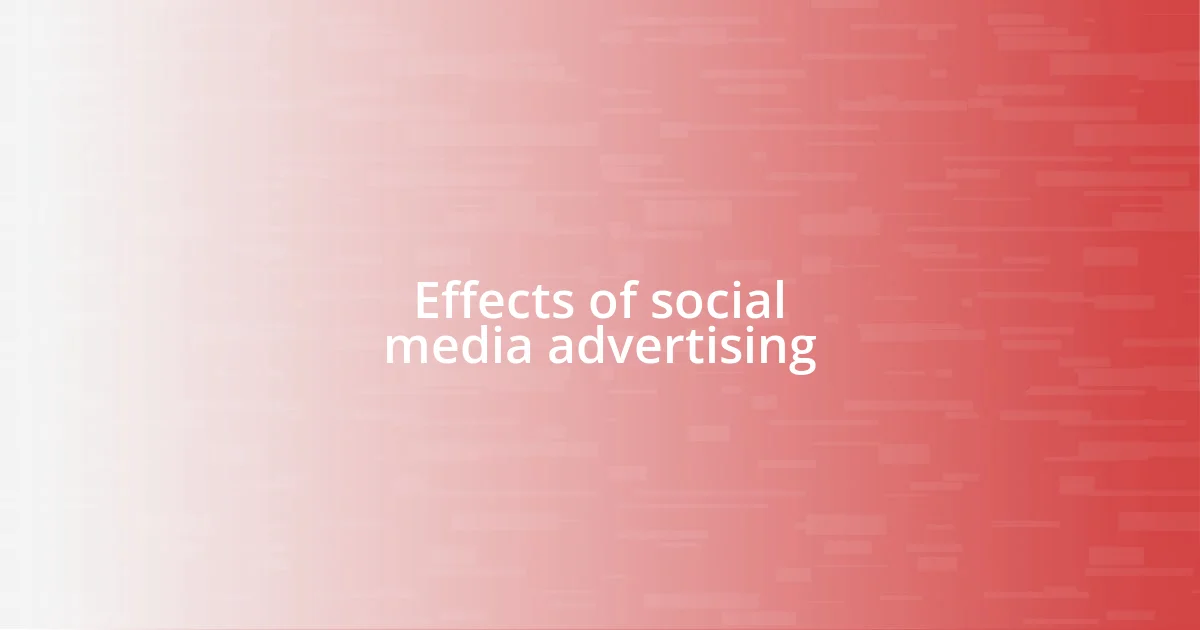
Effects of social media advertising
Scrolling through my social media feed, I can’t help but notice how targeted ads seem to know me better than I know myself. I vividly recall one instance when I stumbled upon a sponsored post featuring a sleek, artisanal cocktail kit. Suddenly, I felt a surge of excitement as I imagined hosting a gathering where I could showcase my mixology skills. It made me ponder: am I truly interested in crafting cocktails, or am I merely responding to the allure of an image designed to draw me in? This exact moment underscored how social media advertising can make fleeting desires feel like essential needs.
Another powerful example sticks out to me from a few months ago. I was at a brunch, and my friends were all pitching in to order a bright, flashy drink they’d seen trending online. There I was, feeling the unspoken pressure to join in while my inner critic questioned if I actually wanted it at all. Was I drinking for pleasure or just to fit into an online narrative? That disconnect between my true preferences and the social narrative created by ads was jarring. It highlighted the emotional pull of these advertisements, which often overshadow what I genuinely enjoy.
Looking back, I can see how social media ads inadvertently shaped my drinking habits, making me more susceptible to peer influence. After seeing a viral trend, I can vividly remember rushing out to buy textured seltzers simply because everyone was raving about them. In the moment, it felt like a fun choice, but later, I was left wondering if the excitement was truly mine or just a byproduct of clever advertising. This awareness has opened my eyes to the importance of discerning my authentic tastes from those imposed upon me by marketing, urging me to reclaim my choices.
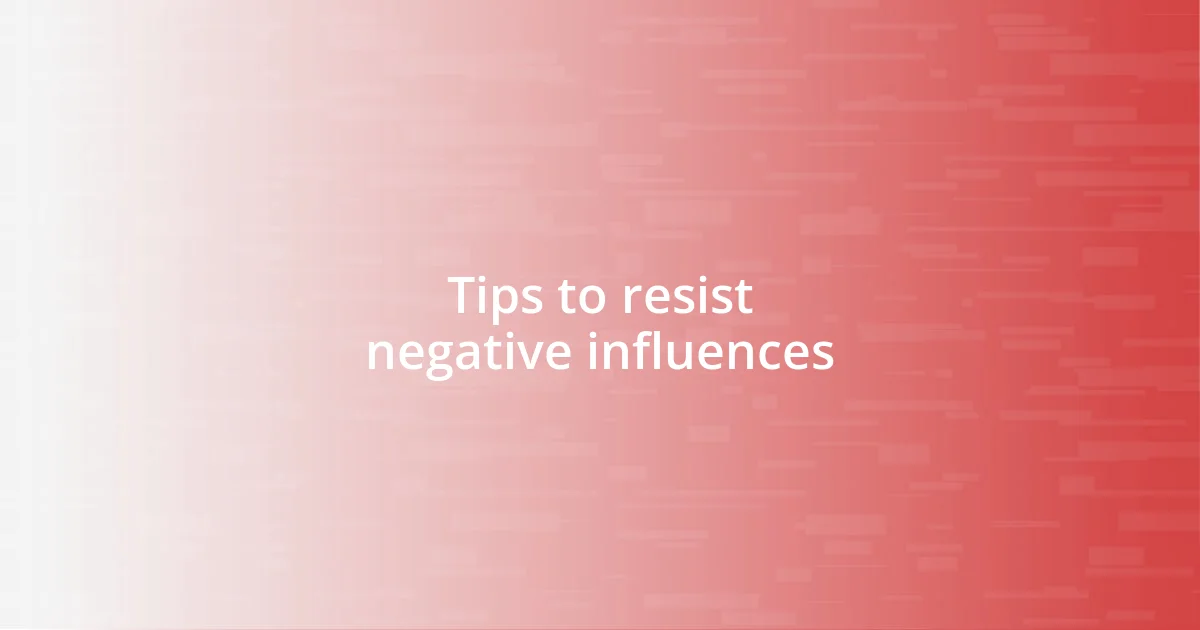
Tips to resist negative influences
When faced with negative influences, a helpful technique I’ve discovered is to pause and reflect before making a choice. I remember a time when I was at a party and everyone was raving about a new trendy cocktail. Instead of just going along with the crowd, I took a moment to ask myself, “Do I really want this, or am I just following the hype?” This simple pause allowed me to reconnect with my preferences and ultimately choose a drink I genuinely enjoyed.
Another approach I’ve found effective is to surround myself with supportive friends who respect my choices. At a recent gathering, I was tempted to join the others in their drink orders, but my close friend encouraged me to stick to my usual drink. Hearing her support made me feel less isolated in my choices and reinforced my confidence in resisting the pressure. Isn’t it funny how accountability can be a game-changer in those moments of doubt?
Finally, I have learned the importance of setting personal boundaries. After realizing how often I’d been swayed by advertising and peer pressure, I made a conscious decision to keep track of my drinking habits. Each week, I jot down my choices in a journal, noting what influenced them. Reflecting on this not only reaffirmed my commitment but also helped me understand what truly satisfies me, reminding me that my choices are ultimately mine to own. Do you keep track of your habits? It’s a powerful exercise that can reveal a lot about your relationship with what you consume.
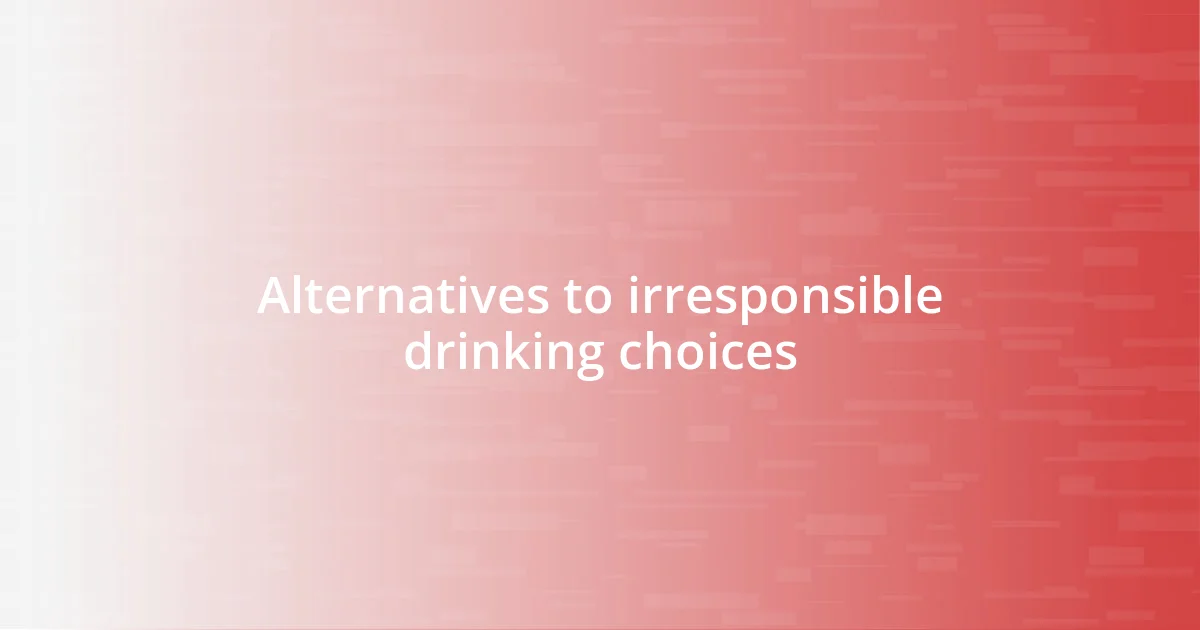
Alternatives to irresponsible drinking choices
Sometimes, I’ve found that exploring non-alcoholic beverage alternatives can be a game-changer. For instance, I once attended a social gathering where everyone was indulging in fancy cocktails. Instead of feeling left out, I decided to try some creative mocktails. To my surprise, I discovered I really enjoyed a refreshing blend of sparkling water, fresh lime, and mint. Why hadn’t I thought to explore these options sooner? It helped me realize that non-alcoholic drinks are not just “the other choice” but can be just as exciting and delicious.
Additionally, I’ve started incorporating mindful drinking into my routine. There was a particular night when I chose to sip on a flavored soda water instead of a high-calorie cocktail. I truly focused on the flavors, feeling refreshed and present rather than tipsy. This shift made me cherish the experience more. Have you ever considered how being mindful about what you drink can enhance your enjoyment? It’s fascinating how clarity can lead to preferences that align more closely with who you are, rather than who you feel pressured to be.
Lastly, I find that engaging in activities that don’t revolve around drinking is incredibly fulfilling. One weekend, instead of suggesting a bar outing, I invited friends over for a game night featuring delicious food and non-alcoholic drinks. The laughter and connection we shared were so intense that I hardly thought about missing the booze. This made me ponder: how often do we overlook the amazing potential of alcohol-free fun? By shifting the focus to experiences rather than beverages, I’ve found richer connections and healthier choices that just feel right.
